Landmarks
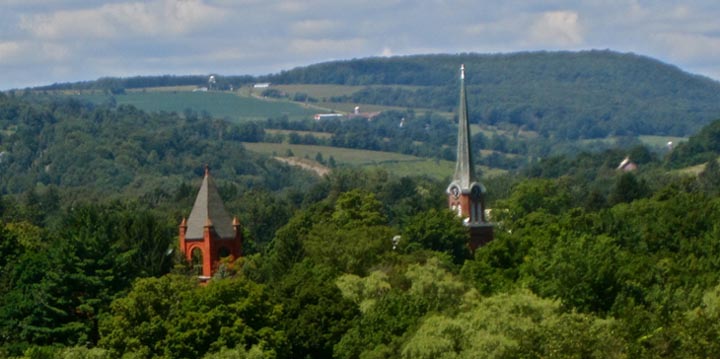
The Village Green
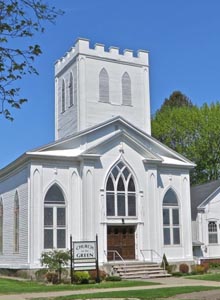
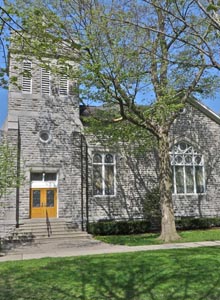
Replaced 1841 structure
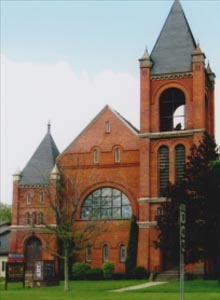 © 2010 Jackson Brazo
© 2010 Jackson Brazo
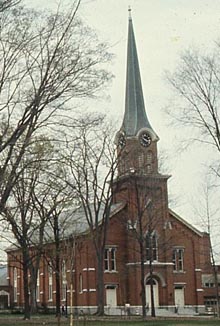
The Homer Commons, as the Village Green was first called, was a military tract given to soldiers who fought in the Revolutionary War. The soldiers deeded the land to the First Religious Society of Homer for a meeting house and cemetery in 1805. Designed by Paris Barber, today the Green is still the heart of the community and is surrounded by the Homer Historic District with more than 200 structures on the National Registry.
The Brockway Block
The photo on the right features the Union Building, an 1888 Romanesque structure with 12 chimneys along the length of the roof. Each chimney originally led to a “chunk” stove.
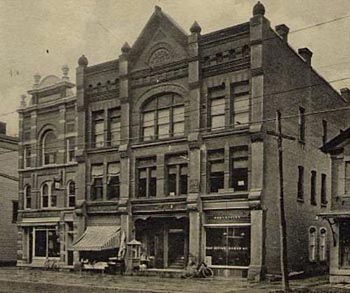
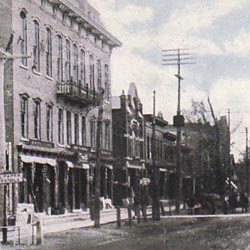
The Barber Block
This commercial block is highlighted by the mansard-roofed building erected in 1863 by Jedediah Barber. Note the decorative cast iron surrounds on the first floor windows. 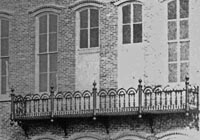
Unfortunately, the opera house's iron balcony (see detail on right) is no longer there but will hopefully be restored.
Homer Town Hall
Built in 1908 and opened in January 1908, this building was designed by Charles F. Colton of Syracuse. You can read about the building’s history here.
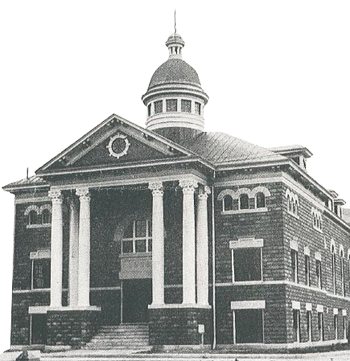
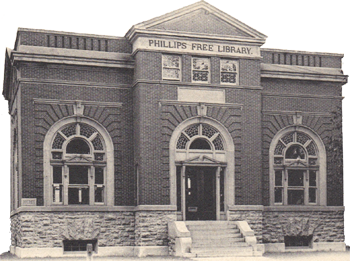
The Phillips Library
Designed by famed local architect, Archimedes Russell, the library opened in 1903. Named for George Phillips, a Homer resident, who donated $50,000 to provide the community with a library.
The building is still being used for its original purpose.
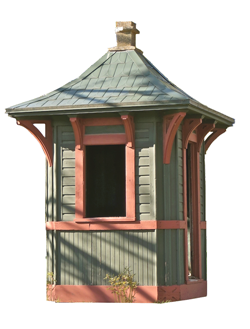
This tower was restored by the Landmark Society and moved to Clinton Street. Its pressed tin roof chamfered corners, tonge and groove siding and Italianate brackets are typical of the best railroad architecture of the 1800s.
Railroad Station and Watch Tower
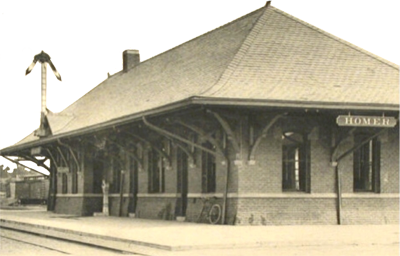
The station shown here, at 43 James Street, replaced the original 1854 building around 1900. Passenger trains stopped running through Homer in 1957 and, in 1963, the structure was purchased for use as a business office. It now houses the Homer Police.
Sig Sautelle's Circus House
Sig Sautelle built this octagon shaped building in 1905 as the winter training quarters for his circus.
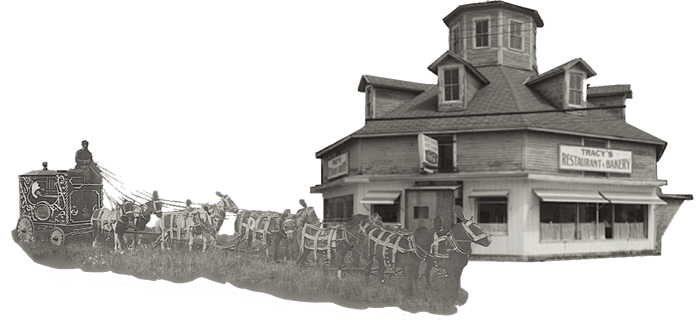
The three story 55' octagon building was built to look like a circus tent. It has a full octagon basement where the circus animals were housed until separate octagon shaped outbuildings were constructed. There is also a 45' octagon third floor attic topped with a 10 foot octagon cupola and seven dormers.
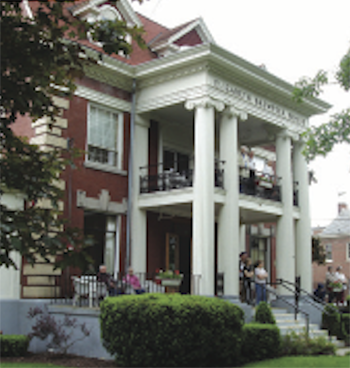
Brewster House
In 1891, Elizabeth Brewster (1804-1898) donated three houses and an acre of land to provide homes for elderly women who had limited financial resources. The “Cortland County Home for Aged Women” opened in 1892.
In 1909, it was decided that building a three-story brick structure across from the Village Green would better meet the community’s need for eldercare. The name was subsequently changed to honor the generous Mrs. Brewster.
The Sherman Block
Originally, the 1830s building was the Homer Exchange, a hardware store owned by William Sherman, the first New Yorker to mass-produce nails.
Francis B. Carpenter, a Homer resident who painted “The First Reading of the Emancipation Proclamation by President Lincoln,” also had a studio in the building.
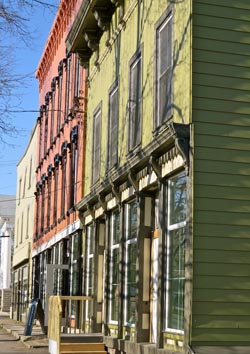
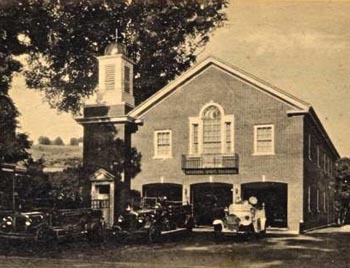
Fire Station
The Fire Station at 45 South Main Street was completed in 1941. It remains as it was then, with the addition of two bays on the right side and, of course, updated vehicles and equipment.
The Manor at Briggs Hall
The home of William Sherman was built in 1820s. The front of the house is original.
The Briggs purchased the property in the 1870s and added the middle section in the 1890s. The rear section was added about 40 years later.
The building retains a magnificent winding staircase, Victorian chandeliers and other historic features.
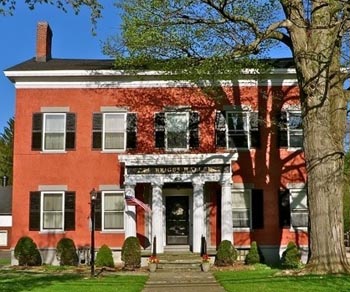
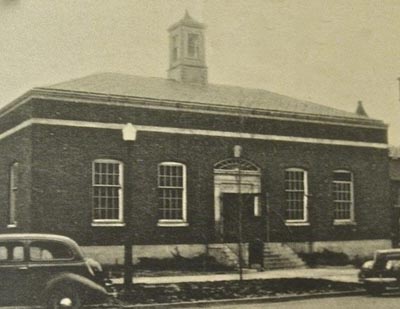
Homer Post Office
Located at 2 South Main Street, the post office is a historic building built in 1937-38. It is a one story, steel frame, five bay rectangular structure clad in brick on a stucco clad foundation in the Colonial Revival style. The interior features a 1940 mural by Frank Romanelli titled "Albany Street Bridge over Tioughnioga River."
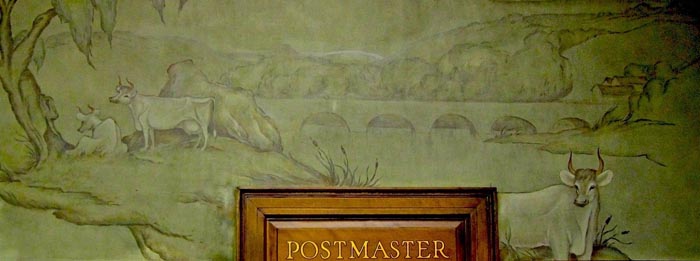
Bank Building ~
David Harum Restaurant
Jedediah Barber built this structure in 1853 to be used as a bank. The building, with its cast iron overwindows, is one of the most interesting commercial buildings in Homer and Cortland County.

Historic Bridges
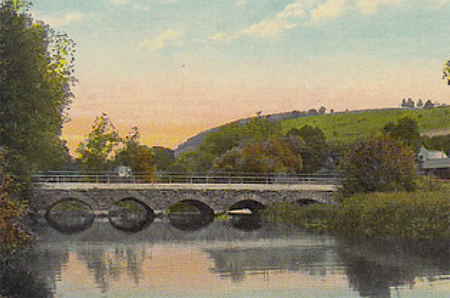
Albany Street Bridge
The Albany Street Bridge was the first bridge built in Homer. It is depicted in the Homer Post Office on a WPA Mural by Frank Romanelli.
Truss Bridges
Truss bridges are significant types of bridge technology. Although they are extremely rare, Homer boasts three of the structures, all within walking distance of the village.
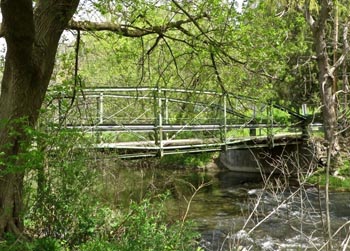
Pine Street Bridge
A truss is a rigid framework of wooden beams or metal parts designed to support a bridge. Constructed from standard pre-fabricated parts, Truss Bridges were marketed to local municipalities via catalogs. They were appealingly inexpensive and easy to construct with unskilled labor.
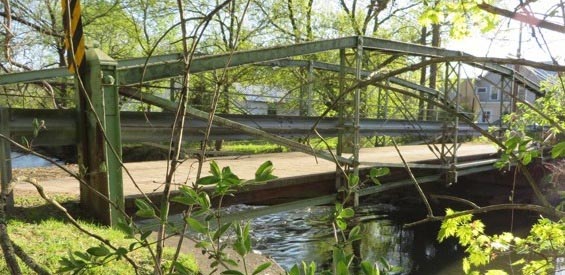
Homer’s Wall Street Bridge spans the West Branch of the Tioughnioga River
The Wall Street Bridge is a Metal Pinned Lenticular Pony Truss built in 1878 and is still in use today. It is one of 3 bridges in Homer on the National Register of Historic Places.
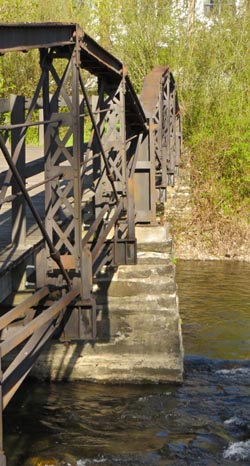

Other Truss Bridges in Homer are at Pine Street and Water Street.
The Pine Street Bridge, built in 1878, is a standard wood truss style with tension rods inserted for greater support. The Pine Street bridge is the longest of the three lenticular truss bridges at 71.9 feet long.
The Water Street Bridge dates to same period and is of similar construction. The Pine Street Bridge is closed but the Water Street Bridge is open to pedestrians.
All three truss bridges were built by the Corrugated Metal Company which became the Berlin Iron Bridge Company in 1885.


